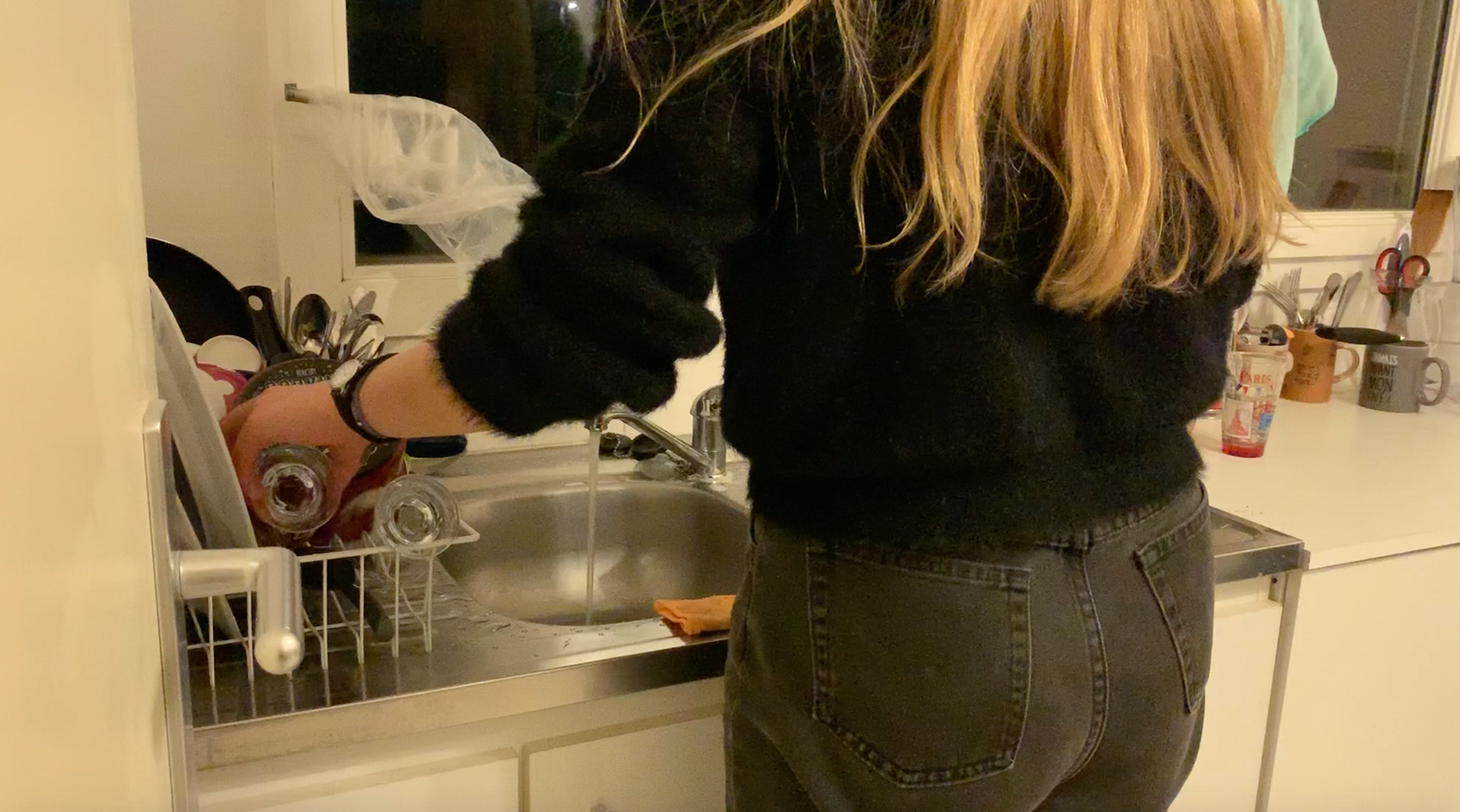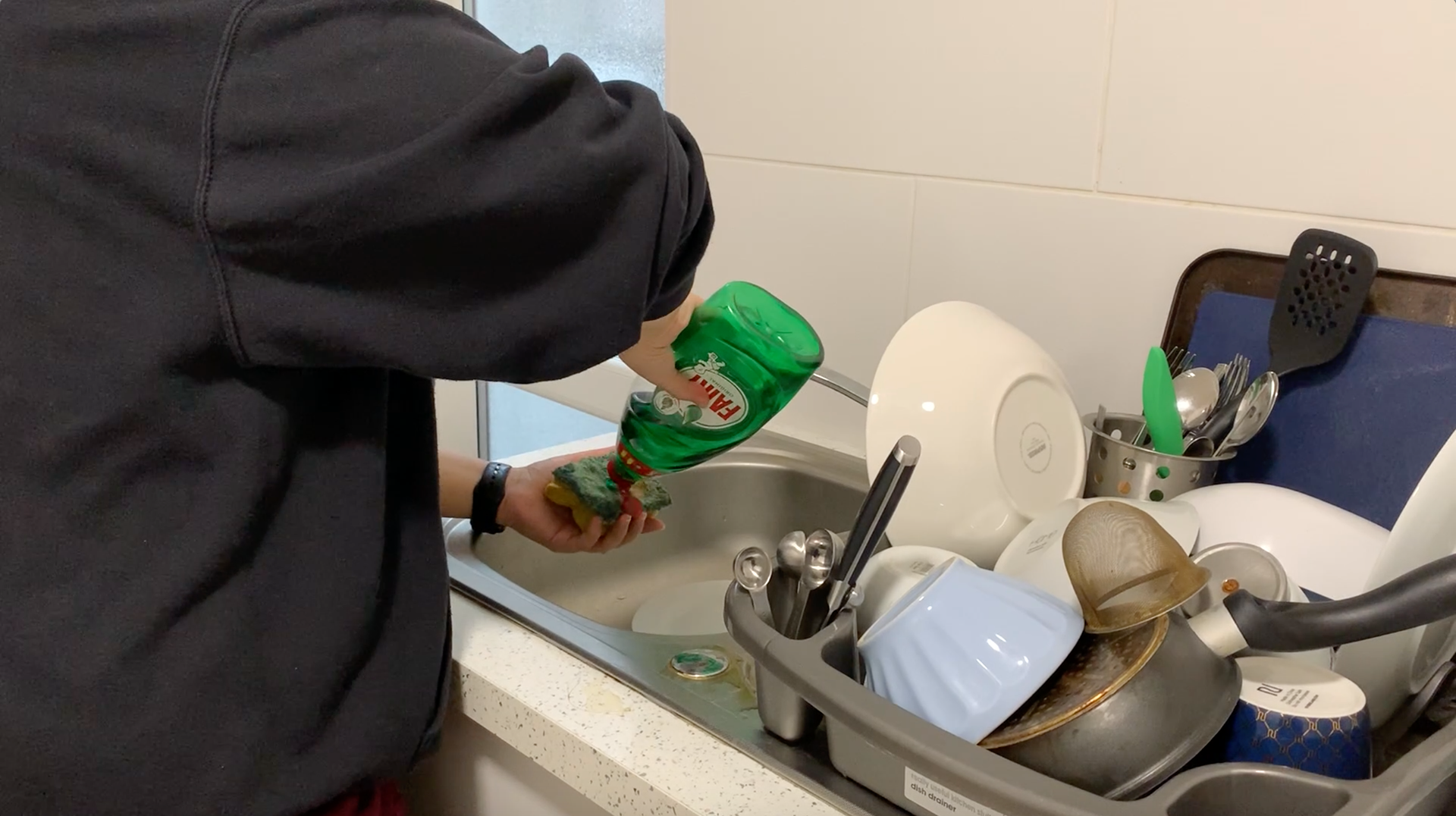Year: Fall 2019
Duration: 14 weeks
Client: Hubbub
Project Type: Individual
Role: Research/Design Lead
Tools: Adobe: XD/InDesign/Illustrator/Photoshop
Brief: "Based on the encouragement we provide to university students to reduce their water use, we’d like further insights into the target audience, including an idea that changes behavior, and a strategy of how this idea would be put into action as part of a university campaign".
BACKGROUND
Hubbub is an England-based, charitable organization that designs campaigns to make environmental action desirable, disrupting the status quo to raise awareness, nudge behaviors and shape systems. Their water saving campaign called ‘Tap Chat’ aims to encourage people to open up about their water habits and share simple, tangible tips to save water. Through their campaign, they’ve identified six major reasons for tackling water consumption, hoping to encourage university students to adopt a water saving mindset.
1. It’s cheaper: water is relatively cheap compared to other utilities.
2. Water is used in private: excessive water usage can go unnoticed.
3. Bills are less regular: this makes it harder to compare monthly usage.
4. Perceived abundance: water is always available on tap to most people.
5. Benefits are less visible: effects of reduced water consumption go unnoticed.
6. Lack of trust: disbelief that individual actions can make a difference.
2. Water is used in private: excessive water usage can go unnoticed.
3. Bills are less regular: this makes it harder to compare monthly usage.
4. Perceived abundance: water is always available on tap to most people.
5. Benefits are less visible: effects of reduced water consumption go unnoticed.
6. Lack of trust: disbelief that individual actions can make a difference.
THE PROBLEM
With many of our house-hold appliances running on copious amounts of water, it can often feel as though there is an unlimited supply. For decades, studies have shown that we are rapidly heading toward an unbearable reality: limited to no access to clean water. Because most people don’t have a quantifiable understanding of how much water they are using, residents in England find it difficult to understand how our planet is facing a water crisis: “when it comes to water scarcity, the last place on Earth you’d think of is rain-soaked England” (Smedley, 2019). However, England received a 25-year warning of ‘severe water shortages’ in the spring of 2019 (Gerretsen), putting the country in an extremely vulnerable position. Citizens are struggling to acknowledge or recognize that their daily habits and actions contribute to global issues specific to access to water.
While it may feel like the rain fails to cease, the country is rapidly heading toward its warmest summers yet. Currently, “the average Brit uses 150 liters of water per day, through a combination of showers, high-flush toilets, dishwashers, washing machines, and garden hoses” (Smedley 2019). To tackle this issue, raising awareness around water usage and consumption is a vital first step in addressing the water crisis in developed communities. For years, companies have made significant technological advancements when it comes to dishwashing. So much so, that using a dishwasher, contrary to popular belief, requires less water than washing the dishes by hand. “In order to wash the same amount of dishes that can fit in a single load of a full size dishwasher and use less water, you would need to be able to wash eight full place settings and still limit the total amount of time that the faucet was running to less than two minutes” (Mooney, 2015). For students living in shared housing accommodations in Loughborough, England, it is extremely unlikely that they’ll have a dishwasher at their disposal, which forces them to wash the dishes by hand. “While it may be possible to use less water/energy by washing dishes by hand, it is extremely unlikely,” (Mooney, 2015).
ETHNOGRAPHIC RESEARCH
In conducting primary research, two methods were carried out: semi-structured interviews and shadowing. Interviews were utilized to better understand each participant’s self-awarenesss and ability to accurately recall their behavior. Participants were then asked to engage in the washing up process, allowing me to observe them within this particular context as they slip into the subconscious “flow” of the task. From these two methods, the data revealed a contrast between participants’ perceived behavior and their actual behavior, helping me identify information I may not have seen otherwise. The participants for this research project consist of students attending Loughborough University, who live in a shared accommodation and split the water bill equally with their housemates, regardless of each individual’s respective water usage.




FINDINGS & INSIGHTS
Landlords: Landlords possess tremendous influence over their tenants water consumption. Whether that’s by placing a bucket in the sink or controlling the water cap on the utilities bill, landlords can influence the extent to which students practice water saving behaviors.
Shared Housing: Students are heavily influenced by the ways their fellow housemates behave. If a housemate uses an eco-wash setting, takes quick showers, or practices water saving behaviors when washing up, it’s likely that the other housemates will adopt these behaviors.
Priorities: For the majority of students, their priorities around the washing up process varied, but regardless, each of these priorities contributed to water waste. Some of these included letting the water run to maintain a certain temperature, and refusing to use the “gross bucket method”.
Education: Some students believe they possess more knowledge regarding the washing up process than they actually do. This overconfidence leads to a misconception around their quantifiable understanding of how much water they’re using within daily practices.
CONCEPT IDEATION
Sensored Taps: The concept aims to include products with infra-red sensor designs that provide hands-free technology to prevent users from letting the water run excessively. This technology system uses a simple circuit of LEDs that detect when an object is placed in front of them. "While they involve electricity and water, they are completely safe for humans based on the electricity supplied from the tap" (The Advantages & Disadvantages of Hands-Free Infrared Taps).
Interactive Tablets: It also features a standard tablet that could be used to allow users to choose their desired water pressure, temperature and time limit for the tap running. The design of the home screen is also inspired by that of the Netflix application.


TARGET USER
In order for Vitality to be scalable, this design targets users that have financial access to a sufficient supply of clean water. As early as 1999, scientists warned us that 16% of the world’s population was consuming some 80% of its natural resources (Utley, 1999). This statistic uncovers an unsettling truth about the water crisis — that it is those in the affluent, developed world who are using up most of the Earth’s resources (Pearce, 2009). It can therefore be assumed that target users have sufficient economic means and can afford a higher priced product.
BEHAVIOR CHANGE STRATEGY
To generate behavior change, this design optimizes behavior steering. This strategy “facilitates the adoption of more sustainable behaviors through explicit potential actions embedded in the design” (Lilley 2019). “In his book, The Design of Everyday Things, Donald Norman discusses the importance of prompt-like tools in the user interface of products” (Clune). These affordances provide strong clues to the operation of things (Norman, 2002), which often steer the user toward the intended product engagement. Utilizing prompt-like services help encourage the user to be mindful in considering their tap settings within a given context. Furthermore, behavior steering can be triggered by providing users with an experience that includes aspects of comfort and convenience, fitting their existing norms. Steering participants towards behavior change is then triggered by new norms, which are visible and desirable positive actions that can be followed and promote sustainability (Clune). Finally, it’s important to remove as many external barriers as possible, including safety, distance, image, cost, comfort and cleanliness (McKenzie-Mohr). While mitigating excessive water consumption, this design prioritizes ease-of-use to make for a convenient and sustainable experience.
FINAL DESIGN
iOS Layout: The application engages with the user on a weekly basis to quantifiably inform them of their water consumption. This application connects to the control panel via wifi, and the panel initiates the weekly notification.
Providing users with a notification that's similar to the "screen time" iOS notification, which serves as a helpful and informative weekly reminder and evaluation of how much time they spent looking at their screen. Rather than guilting users into reducing their water consumption, this compassionate approach can feel encouraging and often motivate people to continue making progress (Shu, 2018), helping users feel supported and cared for. While the feedback won't trigger behavior change on its own, pairing with a behavior steering method can only add to the cause.
Sink Technology: The infra red sensors are displayed at the front base of both the tap and soap dispenser. These sensors trigger both parts, respectively, when an object is placed in front of them. Each sensored technology is spaced strategically to ensure one isn’t triggered unintentionally. Each sink compartment is deep enough to prevent from triggering the sensors. The compartments are made from stainless steel, as to also not trigger the sensors (Martinez, 2017).
In tandem with the application are the user profiles, so that each housemate can receive individual, weekly feedback regarding water consumption. To collect their water usage data, they simply need to click on their use profile before beginning the washing up process. The countdown at the top of the screen tells the user how much time they have remaining for the tap to stay on, based on the dish selected for washing. The control tablet uses wet finger tracking to allow users to engage with the device even with wet hands. Additionally, the water rejection feature prevents the screen from getting damaged by unexpected water (Anderson, 2012). The top sliding bar gives the user full autonomy in choosing their desired temperature, while the bottom slide bar lets the user choose their desired water pressure. Each temperature and water pressure is initially suggested based on the chosen dish type. The sliders can then be adjusted as desired.
